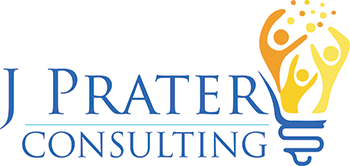Often, I reflect on the evolution of my thinking throughout my career. I’ve been in training and development formally in my career for the past 15 years, but quite honestly, I’ve been doing things around training in development for much longer.
I’ve always been interested in education, psychology and how humans change our behavior. That’s why I chose to go into a career of training development and organizational behavior. The field was so appealing to me and there’s an element that continues to be extremely interesting as work in organizational development and training for teams.
There’s a great misunderstanding out there, that there is a magic bullet or secret sauce to training great teams. I’m gonna be 100% honest — there is no single solution that is the end all, be all for business training. Change efforts are only as good as the environment you put it in.
If I could point out the most powerful part of great training, it is the framework around common language.
If you’ve been following my blog for very long, you know that I am a huge fan of the work of Brené Brown. She is an author and researcher that primarily looks at shame and belonging. Her newest book “Atlas of the Heart” focuses on the idea of naming, so that we can work through emotions.
There’s no particular power in the words themselves (after all, what’s the real difference between envy and jealousy) but by having a common framework and single word that we can have joint understanding. The nuance creates shortcuts.
We see parallels in the corporate world when we deliver training.
To be honest, there’s nothing new under the sun. Concepts such as leadership and communication have been around since men began working in teams.
Having a common language after training is similar to having a conversation between two native language speakers and using a translator. I spent the first years of my career in a multinational organization. In several roles, I had the unique opportunity to work with many nationalities and countries. I would work not only with people where English was their second language, but also worked through a translator. It was so cool to be engaged with so many different cultures and languages, but we occasionally ran into some language barriers!
When two people don’t have the same level of proficiency with a single language, the conversation takes a little bit longer to get on the same page. We might have to use alternative words and there is a higher likelihood of misunderstanding.
Especially if you’re southern and speak in idioms (guilty as charged).
Conversations might have to stop to discern for meeting or there may be a higher likelihood of misunderstanding.
Speaking the same language proficiently just saves time.
In the same way, the common language that great training creates is what REALLY makes a difference. If you have a common language, you can grow and develop together, name and distinguish thoughts, and build rapport around the the solution. If you have a shared understanding of terms, it becomes easier to troubleshoot and look at things realistically. You can more easily share what you’re seeing and experiencing.
One of my favorite frameworks for common language? Situational Leadership® delivers the most powerful and impactful common language that I’ve seen in the work setting. Rooted in leadership but delving into topic such as influence, communication and perception, the content in Situational Leadership® focuses on an easy to understand framework that creates common language across teams.





